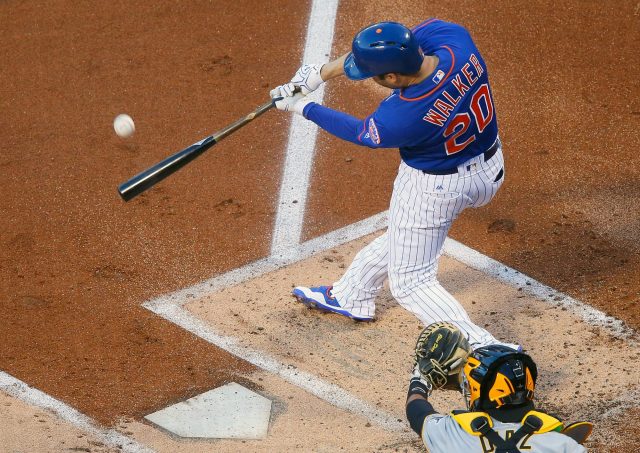New York Mets: The Importance of Retaining Neil Walker

The New York Mets have a turbulent offseason ahead and should explore retaining Neil Walker for the long term.
Neil Walker‘s name has been mentioned quite often lately, mostly relating to trade rumors. While interest in the second baseman increased right before the deadline, he was not dealt, though is a candidate to be moved in August. Whether Walker finishes the season in Queens is still a mystery, but the New York Mets should consider making him their second baseman of the future regardless.
The Mets will have money to spend this coming offseason as Walker joins Curtis Granderson, Jay Bruce, and Jose Reyes in free agency. Asdrubal Cabrera‘s $2 million buyout (of an $8 million team option) could be exercised and the trades of Lucas Duda and Addison Reed will only free up more money for the Mets to be aggressive in free agency.
The often frugal Mets will have no excuse not to spend and with the acquisition of AJ Ramos, have positioned themselves to make a run at October in 2018. Signing Walker to a three or four-year pact worth $12 to $15 million per season should be well within their budget.
[sc name=”Mets Center” ]Now that the financial aspect of Walker’s next contract has been estimated, let’s look at why it’s essential to keep him in New York moving forward.
Veteran Presence
The Mets infield next season is likely to consist of Amed Rosario at shortstop and Dominic Smith at first base, while uncertainty remains at third base. If the Mets were to employ some combination of Wilmer Flores and T.J. Rivera at third, Walker would be used as a much needed veteran presence on what could be a primarily young infield. He’s emerged as a quiet leader in the clubhouse and his professionalism would only benefit those youngsters as they mature.
Proof is in the Production
Walker’s offensive production is fairly consistent and while he’ll be entering his age-32 season, he’s a fairly safe bet to predict what he will do with the bat. A middle infielder with pop, Walker has recorded double digit home runs every season since 2010. He may never win any batting titles, but his power, ability to switch-hit and lifetime .272 batting average make for a solid option at second base.
Versatility
This characteristic is twofold. Offensively, Walker can bat just about anywhere in the lineup, giving manager Terry Collins flexibility based on the handedness of the pitcher. It also allows him to shuffle other players in the lineup to give the Mets a different look on numerous occasions.
[sc name=”Mets Link Related” link=”https://elitesportsny.com/2017/08/02/mets-injury-filled-season-takes-step-in-wright-direction/” text=”David Wright Begins Baseball Activities” ]Defensively, Walker is primarily a second baseman. However, he has some (albeit not much) experience playing third base. It can’t hurt to have a guy that knows how to play more than one position. He won’t win any gold gloves, but he’s sure-handed and makes all the routine plays that Daniel Murphy once gave fans ulcers about.
Sure, Walker comes with his risks. After back surgery last season and a hamstring issue this season, injuries are obviously an issue. As he enters his early-to-mid-thirties, his body may not respond positively. However, Walker’s injuries have been more freakish than chronic. He doesn’t have bad knees or a lingering ankle issue and has performed well upon returning to action on both occasions.
The New York Mets plan to contend in 2018. Keeping a strong veteran presence and proven offensive weapon at second base could benefit the team as it gears up for another run at the promised land. Gavin Cecchini is an intriguing option to play second as well, but his inexperience is something that a contending club may not want to gamble on.
The Mets explored extending Walker earlier this year, so the mutual interest seems to be there, at least to some extent. Let’s see if the two sides can finally come to terms this winter.
[sc name=”Mets Link Next” link=”https://elitesportsny.com/2017/08/02/new-york-mets-amed-rosario-mlbs-next-great-shortstop/” text=”is Amed Rosario baseball’s Next Great Shortstop?” ]Central jersey born and bred. Monmouth University alumnus. Sports are not games, rather ways of life. Twitter: @Gcam92
Contact: G.Cambareri123@gmail.com






